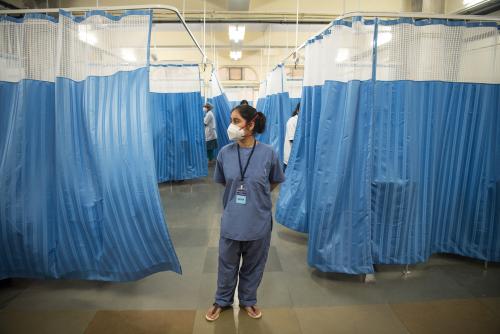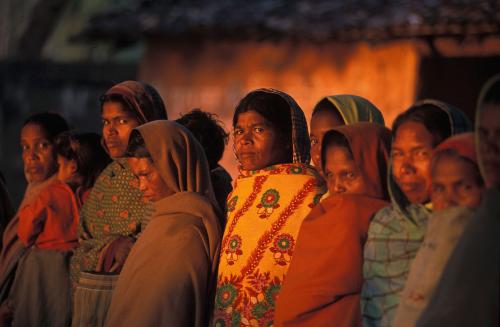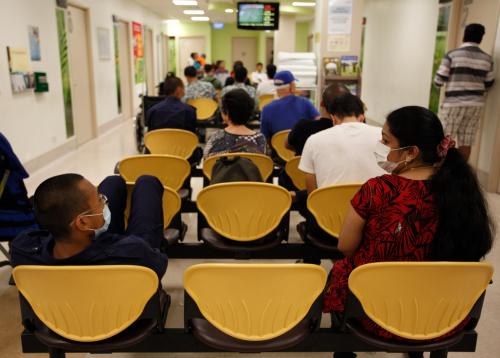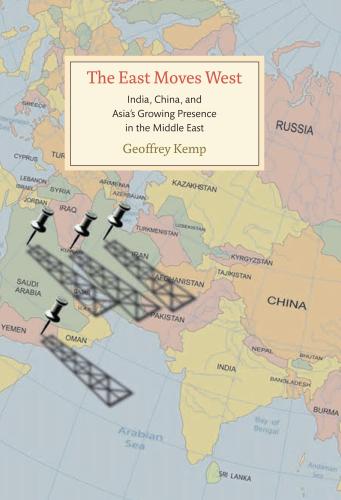Content from the Brookings Institution India Center is now archived. After seven years of an impactful partnership, as of September 11, 2020, Brookings India is now the Centre for Social and Economic Progress, an independent public policy institution based in India.
This article first appeared in Mint on March 30, 2015
Budget 2015 was creative on several dimensions but fresh thinking was completely missing in health financing. This budget, like several in the past, reinforced insurance as the strategy for health financing in India. As the experience of many countries has revealed, this is a perilous path which will take India towards an inefficient and sticky equilibrium, one which is difficult to get out of.
What will our healthcare system look like in the next two decades? Depending on policies, we could end up spending 18% of our gross domestic product (GDP) on health, like the US, or 4%, like Singapore (or somewhere in between), while achieving the same outcomes. Most agree that we need a strong primary care system which is publicly funded and focuses on preventive and public health measures. Beyond this fundamental agreement, there are divergent views on financing methods to adopt. Our current system is largely out of pocket payments, with tax breaks provided for health insurance. Between 2007 and 2010, some state governments in south India adopted publicly-funded insurance models for secondary and tertiary care for the poor. The national government followed with the Rashtriya Swasthya Bima Yojana (RSBY) in 2008. Towards the end of the term, the United Progressive Alliance (UPA) government’s favoured instrument was a single-payer Universal Health Coverage (UHC)—free care at all levels to everybody, mainly through entitlements backed by government funding and purchasing of health services.
These approaches have serious problems. Insurance is widely recognized as a poor model for healthcare because it suffers from severe information asymmetries. In a voluntary insurance market, there is adverse selection problem which means that people who buy insurance on average are more likely to be sicker than the rest of the population. This makes the pool of insured riskier than average population, thereby making pricing and functioning of insurance market difficult. Most developed countries such as the US have therefore made health insurance mandatory to overcome this problem.
The other big tension that arises due to information asymmetry is moral hazard. Neither patients nor physicians have the incentives to control costs and therefore overuse. This makes the insurance system unsustainable, leading to massive cost inflation. The example here is the US, which spends 18% of its GDP on healthcare, close to double what most developed countries spend. Closer home, in recent times, many Indians too have experienced excessive hospitalization and diagnostics if the answer to the doctor’s question “do you have insurance?” is in the affirmative.
UHC proponents recognize these shortcomings and point to developed countries which adopted tax funded, pay-as-you go single payer systems that depend on governments to pay healthcare costs for citizens. While most of these countries have well-run public systems, they are currently facing a crisis of sustainability. As their population ages and there are fewer young people to pay into the system, there are more elderly who need care.
On the other hand, India’s poor record of governance and managing healthcare systems inspires little confidence in its ability to successfully pull off a universal healthcare system with the government as the single payer. Even if we were to attempt this, while a large majority of population is young and thus relatively healthy, with dropping fertility rates we must look to the future and prepare for a time when our demographics will not be favourable.
We propose a different paradigm for India—medical savings accounts (MSAs). These are individual savings accounts which can be used only for spending on medical care of the individual or their immediate family. Deposits into these accounts can be similarly structured as provident funds, that is a defined contribution receiving tax breaks. This can only be allowed use for medical payments, or as a voluntary contribution receiving deferred tax breaks if used for medical purposes. MSAs enlist healthcare consumers in keeping costs low, and avoid the issues of both consumer moral hazard and adverse selection. They also mitigate the problem of borrowing across generations that arise when a larger part of the population is older since everyone saves for their healthcare costs when they are younger. This is why we must recognize it as a once-in-a-lifetime opportunity for India to start MSAs. With our population largely young, we can start saving for our future healthcare costs. These mobilized funds will help create the health infrastructure needed to deliver the future costs.
Singapore is one country that adopted MSAs in 1984, and it presents a significant success story. Their healthcare outcomes are comparable to developed countries, while their spending is significantly lower. Following their success, China too adopted MSAs for urban areas. China’s experience is recent so we cannot draw long-term lessons, but its size and complexity must serve as an example for India, since we are often quick to dismiss Singapore as “too small” to compare with.
MSAs are no panacea of course. In Singapore itself, MSAs are complemented by high deductible insurance (after a large amount has already been paid from the MSA) and a government fund to pay for the poor. India too has concerns of equity in access to healthcare, particularly for those who would find it impossible to make defined benefit contributions. We can design a system of government-supported MSA for poor and vulnerable segments of the society, for whom MSAs will help overcome problems of adverse selection and moral hazard keeping costs low.
Overall MSAs present an attractive alternative for financing healthcare. With a young population and a healthcare system still in flux, we have a unique opportunity that we must not let go.










Commentary
Op-edThink Beyond Health Insurance
Mint
June 10, 2015